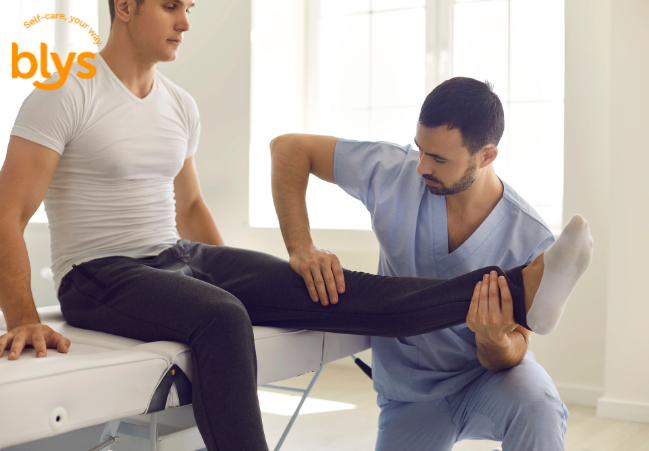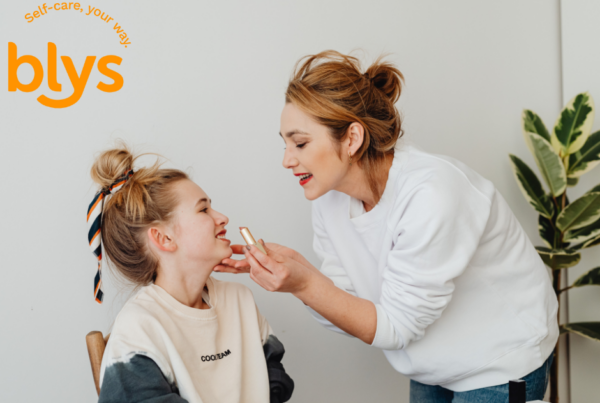
Sports massage is a focused, technique-driven treatment designed to support people who train regularly or live an active lifestyle. It involves a combination of deep tissue work, trigger point therapy, stretching, and myofascial techniques. These are used to target specific muscle groups that are under stress from physical activity.
Unlike a Swedish or relaxation massage, which aims to soothe and calm the body, sports massage is performance-orientated. It prepares the body before training or competition and helps it recover afterwards. The goal is to keep your muscles functioning at their best and reduce the risk of injury.
Before a game or event, sports massage can help increase circulation, improve range of motion, and activate muscles. After intense activity, it supports recovery by easing soreness and removing waste products from the muscles.
The Real Benefits of Sports Massage for Athletes
Sports massage delivers targeted, evidence-based benefits for athletes and active individuals. Here’s why it’s a key component of performance and recovery:
1. Enhances Recovery
Sports massage speeds up muscle repair by improving blood flow, helping clear metabolic by-products like lactic acid. It also reduces DOMS (Delayed Onset Muscle Soreness). A study showed that massage reduces inflammatory cytokines and promotes mitochondrial biogenesis in exercised muscles, aiding faster recovery.
2. Improves Circulation and Flexibility
Increased blood circulation delivers essential nutrients and oxygen while promoting soft tissue pliability. This leads to enhanced range of motion and less stiffness a must for endurance and repetitive-motion sports.
3. Reduces Muscle Tension and Knots
Focusing on muscular adhesions and tight areas, sports massage helps restore proper alignment and function. This reduces strain from inefficient movement patterns and lowers risk of injury due to compensatory biomechanics.
4. Supports Mental Focus and Relaxation
Massage can significantly decrease stress hormone levels and improve mood. Research confirms reductions in cortisol and increases in serotonin and dopamine following massage sessions. These biochemical changes support better sleep, reduced anxiety, and sharper focus all vital for athletic performance.
Sports Massage for Injury Prevention
Preventing injuries is just as important as improving strength or endurance. A well-timed sports massage can make a major difference by addressing small issues before they become bigger problems. For athletes and active individuals, it’s a practical way to stay consistent with training and avoid setbacks.
Here’s how regular sports massage supports injury prevention:
- Releases tight muscles before they cause strain: Muscle tightness limits movement and puts pressure on joints and surrounding tissues. Massage helps release this tension early, keeping muscles flexible and reducing the chance of strain during activity.
- Identifies problem areas before they worsen: Skilled therapists can detect early signs of trouble like knots, adhesions, or movement restrictions. Treating these signs promptly can stop small aches from becoming longer-term injuries.
- Addresses muscular imbalances from repetitive movement: Repeating the same motions, like running, lifting, or swinging, can overwork specific muscle groups. Over time, this leads to uneven strength and posture. Massage helps correct these patterns, improves alignment, and reduces the risk of overuse injuries.
Research published in the British Journal of Sports Medicine suggests massage therapy contributes to injury prevention by promoting circulation, reducing stiffness, and improving tissue resilience.
More people are turning to Thai massage for its deep stretching, improved mobility, and energising benefits. Discover why more and more people prefer Thai massage.
How Often Should Athletes Get Sports Massage?
There’s no strict rule for how often you should get a sports massage. The right schedule depends on your training volume, recovery needs, and the type of sport you’re involved in.
For elite or professional athletes with demanding routines, weekly massage sessions are often essential. They help manage muscle fatigue, reduce post-training soreness, and maintain optimal physical performance over long training cycles or competition seasons.
- Every two to four weeks for active individuals: If you’re moderately active training three to five days a week a massage every two to four weeks can make a big difference. This routine helps manage lingering tightness, supports flexibility, and reduces the risk of minor muscle imbalances turning into full-blown injuries. It also complements your existing recovery practices like stretching, hydration, and proper sleep.
- Pre-event sessions: Booking a sports massage before an event can help loosen stiff muscles, increase circulation, and activate your body for performance. These sessions are typically shorter and more stimulating in technique, focusing on key areas you’ll be using during the event. Many athletes use pre-event massage to not only feel physically ready but also mentally focused and calm.
- Post-event sessions: After a heavy workout, game, or race, massage helps flush out metabolic waste and reduce muscle soreness. Post-event massage supports faster recovery by calming the nervous system and improving tissue repair, so you can bounce back more quickly and stay on track with your training goals.
Even during off-seasons or lighter weeks, regular maintenance massage can keep your body balanced, mobile, and resilient over time.
Curious how massage supports women’s health? Learn how it helps ease stress, balance hormones, and relieve discomfort through every stage of life.
Sports Massage for Different Types of Athletes
Every sport places different demands on the body, so recovery strategies need to reflect that. Here’s how sports massage supports different types of athletes based on their activity, common problem areas, and specific recovery needs:
| Athlete Type | Common Issues | How Sports Massage Helps |
| Runners | Tight calves, hamstrings, and IT band; joint strain; shin splints; knee pain; muscle fatigue | Releases tension in overworked muscles, improves stride mechanics, reduces risk of overuse injuries, and speeds up recovery after long-distance runs |
| Cyclists | Tight hips, stiff hamstrings, lower back strain; posture, and flexibility loss due to prolonged sitting | Loosens tight hips and glutes, improves hamstring flexibility, supports spinal alignment, and promotes a more efficient pedalling motion |
| Weightlifters & Gym-Goers | Tight shoulders, traps, and lower back; muscle imbalances; limited mobility | Reduces muscle tightness, restores range of motion, improves lifting posture, and aids recovery between strength sessions |
| Team Sport Athletes | Muscle fatigue; tight hips and hamstrings; stress on joints from jumping and sprinting | Helps manage cumulative fatigue, keeps lower body flexible and agile, and reduces injury risk during high-impact movement and direction changes |
| CrossFit & HIIT Athletes | Full-body fatigue, DOMS, overload in joints and soft tissue from compound lifts and dynamic movement | Eases soreness, supports tissue repair, reduces stiffness, and prevents overload in commonly stressed areas like shoulders, hips, and lower back |
No matter your sport or fitness level, tailoring your recovery routine to match your training demands can make a real difference. Regular sports massage helps your body stay flexible, balanced, and ready to perform whether you’re chasing a personal best or simply staying active each week.
How to Book a Sports Massage with Blys (and What to Expect)
Blys makes it simple to get a professional sports massage without leaving your space. Whether you’re recovering from training, managing a recurring issue, or just looking to stay ahead of soreness, Blys sends a qualified therapist to your home, gym, office, or hotel, wherever works best for you.
You don’t need to worry about setting anything up yourself. The therapist will arrive fully equipped with everything needed for your session, including:
- A professional massage table
- Clean towels or sheets
- High-quality oils and lotions
The entire experience is designed to be convenient and tailored to your needs. You can customise your booking by:
- Selecting the length of your session, from shorter recovery treatments to longer, detailed massages
- Browsing therapist profiles to choose someone with experience in sports massage or your preferred technique
Booking takes less than a minute. Just visit the Blys website or app, enter your location, select your preferred time and service, and confirm. There’s no waiting around or calling to book—just a few taps, and you’re all set.
With Blys, sports massage fits around your lifestyle, not the other way around. It’s the kind of recovery support that works when and where you need it most.
Recovery as a Strategy With Blys
Recovery isn’t something to save for later. It’s a key part of your training routine, just like staying hydrated, eating well, or showing up to a workout. Sports massage is more than just a feel-good treat. It helps your muscles recover faster, reduces the risk of injury, and keeps you performing at your best.
If you’re training regularly, dealing with tightness, or just want to feel stronger and more balanced, adding massage into your routine makes a real difference. It helps you stay consistent and avoid the kind of breakdowns that can put you out for weeks.
Making recovery a priority is about investing in your performance long-term. The earlier you start, the better your body will feel not just now, but in the future too.
Whether you’re training for a marathon or hitting the gym weekly, support your recovery with a trusted mobile sports massage. Book now on Blys.





